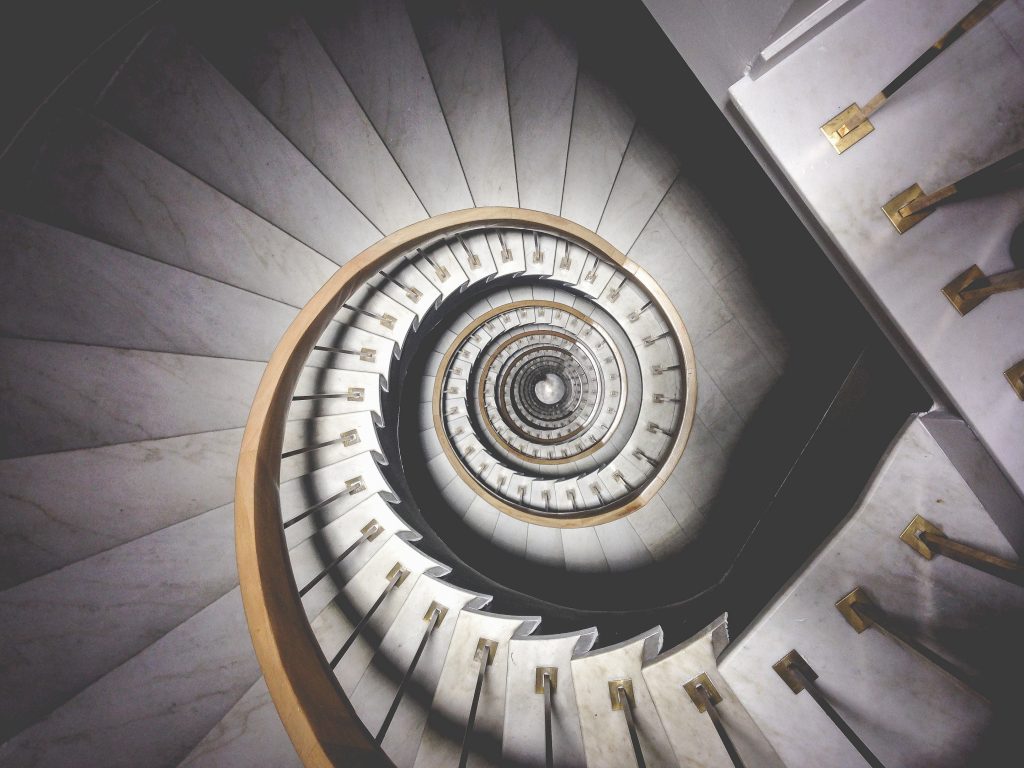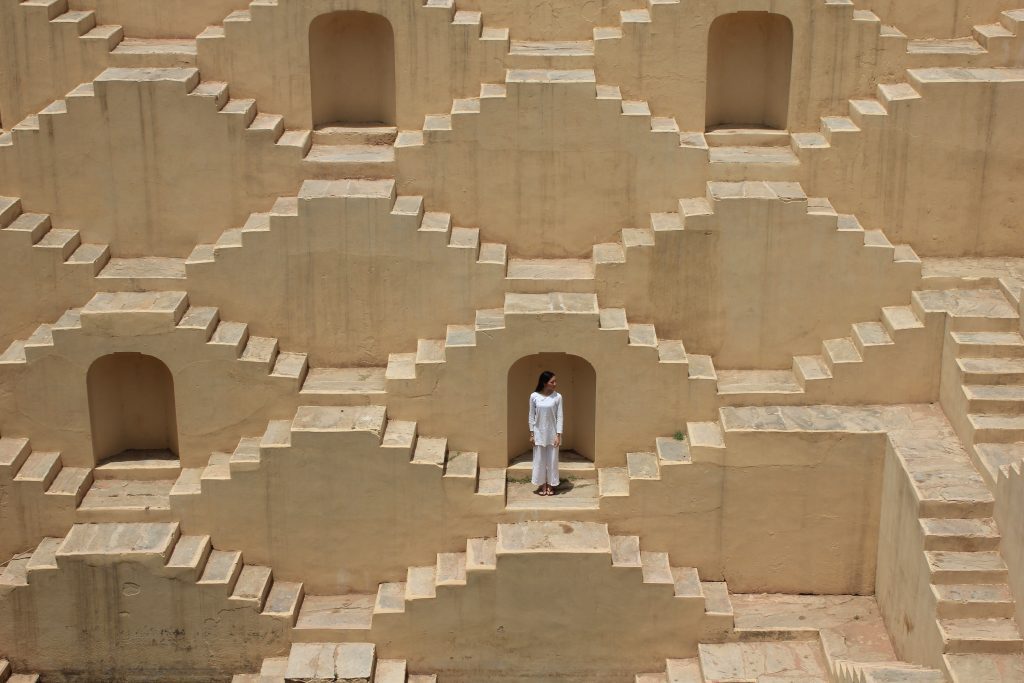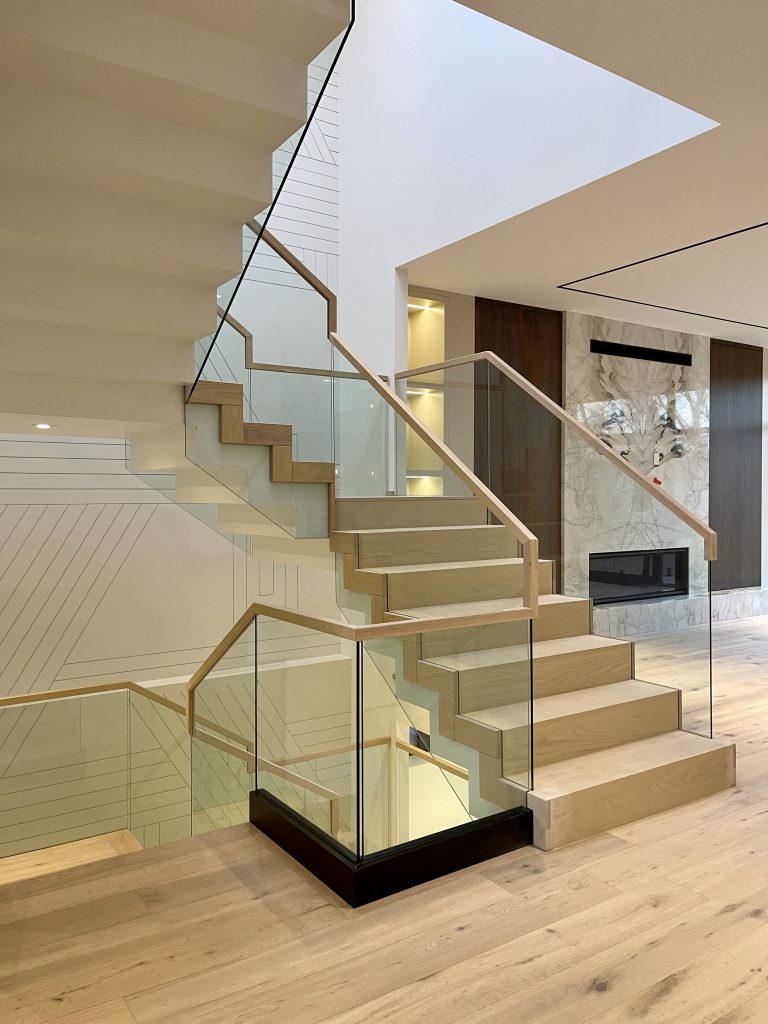
From Function to Art: How Stairs Became a Design Statement
In the vast tapestry of architectural history, stairs have always held a unique and pivotal role. Initially conceived as a simple means to connect different levels, these humble structures have radically transformed over the centuries. No longer just a functional necessity, today’s staircases stand as powerful design statements, echoing their creators’ artistic and cultural sensibilities. But how did we transition from the rudimentary stone steps of ancient civilizations to the sculptural masterpieces that grace modern spaces? Let’s journey through time, tracing the evolution of stairs from mere architectural components to iconic symbols of design and innovation.

The Ultimate Guide to Choosing the Perfect Staircase for Your Home
Historical Perspective
The story of stairs is as old as human civilization itself. In ancient times, stairs served a clear and straightforward purpose: to bridge vertical distances. The grand pyramids of Egypt, with their monumental step-like structures, are a testament to the early significance of stairs. These were pathways to the top and symbolic representations of the pharaoh’s ascent to the heavens.
Fast forward to the opulent palaces of Renaissance Europe, and we witness a shift in the narrative. Stairs were no longer just about utility. The grand staircases of this era, often adorned with intricate carvings and flanked by statues, became a symbol of status and grandeur. They reflected the owner’s wealth, power, and refined taste. The more lavish and ornate the staircase, the higher the social standing of its owner.
The Victorian era further pushed the boundaries of stair design. With the industrial revolution bringing in new materials and techniques, architects and designers experimented with elaborate balustrades, intricate woodwork, and decorative tiles. Stairs became an essential interior design element, often serving as the centrepiece of grand homes and public buildings.
Stairs Essentials: A Comprehensive Guide to Understanding Its Components
The Shift to Modernism
As the world entered the 20th century, a wave of modernism reshaped architectural paradigms. The ornate and decorative styles of the past gave way to cleaner lines, simpler forms, and a harmonious blend of form and function. Architects like Le Corbusier and Frank Lloyd Wright championed this movement, emphasizing the importance of design that catered to human needs while also being aesthetically pleasing.
In this era, stairs underwent a significant transformation. The heavy, wooden staircases of the past were replaced by sleeker designs, often incorporating steel, glass, and concrete. The focus shifted from ornamentation to innovation. Cantilevered stairs, floating steps, and spiral designs became popular, each offering a unique visual appeal while ensuring functionality.
Glass, in particular, emerged as a favourite material, especially in commercial and upscale residential settings. The transparency of glass staircases allowed for an uninterrupted flow of light, creating an illusion of space and offering unobstructed views. This was not just a design choice but also a reflection of the changing societal values – a move towards openness, transparency, and breaking down barriers.
The minimalist approach of the modernist era meant that stairs retained their artistic appeal. Instead, they became sculptural elements within spaces, seamlessly integrating with the overall design ethos and often becoming the focal point of a room or building.
Stairs as Sculptural Elements
The 21st century ushered in an era where boundaries between art and architecture became increasingly blurred. Staircases, in this new age, were not just about ascending or descending between floors; they became pieces of art, captivating onlookers with their design and craftsmanship.
Iconic buildings worldwide began to showcase staircases that were nothing short of sculptural masterpieces. Whether it was the sinuous curves of a helical staircase or the stark, geometric patterns of a modernist design, these stairs transcended their primary function. They evoked emotions, told stories, and became integral to the identity of the spaces they inhabited.
The influence of various art movements also found its way into staircase design. Elements of surrealism, with its dreamlike sequences, or abstract expressionism, with its bold use of colour and form, began to be incorporated. The result? Staircases that were conversation starters, evoking wonder and admiration.
Technology played a pivotal role in this transformation. Advanced software allowed architects and designers to visualize complex designs. At the same time, innovations in materials and construction techniques made it possible to bring these visions to life. Glass staircases, for instance, could be crafted precisely, ensuring strength while maintaining a delicate appearance. On the other hand, metal could be moulded and shaped in previously unimaginable ways, allowing for dynamic and fluid designs.
In essence, staircases became more than just parts of a building’s infrastructure. They became statements, reflections of an era where design was limited only by imagination.

Maximizing Your Space: Creative Ways to Incorporate Mirrors into Small Rooms
Incorporating Cultural and Regional Influences
While global trends in staircase design have been influential, the beauty of stairs often lies in their ability to reflect local cultures, traditions, and materials. Across the world, staircases have been designed to resonate with the ethos of the regions they inhabit, creating a harmonious blend of global design principles and local aesthetics.
For instance, staircases in the sun-drenched Mediterranean regions often feature tiles with intricate patterns reminiscent of the local art and craft traditions. These tiles, often in hues of blue, white, and terracotta, not only add a splash of colour but also tell tales of the sea, the sky, and the earth.
Moving to the East, in places like Japan, stair design is deeply influenced by the principles of Zen and minimalism. Wooden steps, often made from locally sourced timber, are designed to create a sense of calm and tranquillity. The simplicity of design, combined with natural materials, ensures that the stairs blend seamlessly with their surroundings, whether a traditional tea house or a modern residence.
In regions with a rich colonial history, such as parts of South America and Asia, staircases often bear influences from European design merged with local elements. Spanish colonial homes, for example, feature heavy wooden staircases with ornate iron railings, reflecting a blend of European grandeur and local craftsmanship.
Such culturally significant staircases are more than just architectural elements. They are carriers of history, tradition, and stories of the places they belong to. They remind us that while design trends may come and go, the essence of a place and its people remains etched in its structures and spaces.
Choosing the Right Staircase Design for Your Residential Space.
The Future: Sustainable and Smart Stair Design
As we look ahead, the future of staircase design is set to be influenced by two significant global trends: sustainability and technology. With growing awareness about environmental concerns and the rapid advancement of smart technologies, stairs are poised to evolve in ways we might not have imagined a decade ago.
Eco-friendly Materials: The emphasis on sustainability has led architects and designers to explore eco-friendly materials for staircases. Reclaimed wood, recycled metal, and sustainable materials like bamboo are becoming popular choices. These materials reduce the carbon footprint and add a unique, rustic charm to the design.
Smart Stairs: Integrating technology into home design is not new, but its application in staircases is a relatively fresh concept. Imagine stairs that light up as you walk, thanks to motion sensors, or those that can change colour based on the time of day or mood. Smart stairs can also have safety features, such as anti-slip surfaces that activate in wet conditions or alarms that alert homeowners about potential hazards.
Adaptable Designs: With urban spaces becoming more compact, there’s a growing need for flexible and multifunctional designs. Staircases with built-in storage, or those that can transform into seating areas, are solutions that address space constraints while ensuring functionality.
Incorporating Nature: Biophilic design, which seeks to connect occupants with nature, is a trend in staircase design. This involves integrating natural elements like plants, water features, or even rock formations into the staircase design, creating a serene and organic ambiance.

Modern Staircase Lighting: Illuminating Glass and Metal with Roble Glass & Railings
In conclusion, while stairs have come a long way from being mere functional elements, their journey of evolution is far from over. One thing remains constant as they adapt and transform: their ability to connect spaces, stories, and souls. Whether it’s the grandeur of a sweeping spiral staircase or the simplicity of a minimalist design, stairs will always remain a testament to human ingenuity and the endless possibilities of design.

Stairs have evolved from functional elements to artistic masterpieces that define spaces. As we look to the future, we can only imagine the innovations and trends that will further transform stair design, making it even more integral to architectural and interior aesthetics. If you’re inspired to explore the artistic potential of stairs in your own space, remember that Roble Glass & Railings is at the forefront of crafting bespoke stair solutions that perfectly blend functionality with design elegance. Let’s redefine spaces together.
Ready to elevate your space with a design statement? At Roble Glass & Railings, we specialize in turning visions into reality. Whether you envision a modern glass staircase or a classic design with a twist, our team guides you every step of the way. Don’t just dream it; let’s create it together. Contact us today, and let’s embark on a journey to transform your space.



